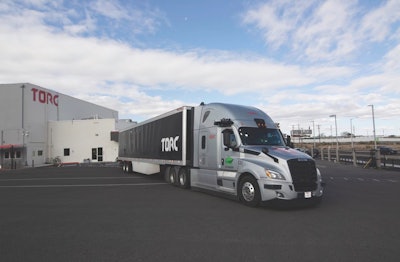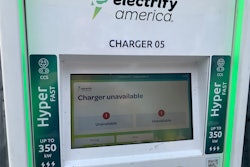
The supply chain that moves freight around the world, driving economic growth and prosperity, is not just about the shipper, the carrier and the receiver. There are technology partners, truck manufacturers, government regulators, suppliers and more. The list goes on. When you think about bringing an autonomous element to one of the most complex and complicated environments in modern-day history, a critical aspect of achieving success is collaboration.
No one is going to solve autonomous trucking in isolation
As freight moves through the supply chain, it touches many different partners that each play a key role in its journey from Point A to Point B and beyond. One of the most critical roles in this journey has traditionally been and still is the human truck operator. Taking the operator out of the equation forces us to collaborate with multiple players throughout the supply chain to understand their role, their needs and their ultimate goals if autonomous trucking is ever going to be successful. No single entity can do this alone.
Adaptation will need to come through an industry-wide level of collaboration
There is no doubt that autonomous trucks will bring monumental change to our industry and to the supply chain as a whole. In order to allow that change to happen, everyone involved in the supply chain will need to adapt how they do business, how they embrace technology and how they partner and collaborate with the rest of the industry. Change of this magnitude can only come through industry-wide collaboration.
Safety starts with the truck
When one of the key goals for long-haul autonomous trucking is safety, the truck itself is where it all begins. Our partnership with Daimler Truck AG will allow us to fully embed our technology into the truck, right on the production line and enable us to work directly with designers and engineers to set specifications to the highest standard of technology integration. For example, OEMs like Daimler can build chassis redundancies into base platforms to accommodate necessary fallback maneuvers that are ultimately needed to create a safe product without a driver. Without our ability to work directly with Daimler to reach this level of integration, this would be a major challenge.
Tech and suppliers
To fully achieve autonomous trucking, you need reliable, hardened, scalable components from tier 1 suppliers that can provide technology such as radar camera, LiDAR, and computers that meet necessary safety standards to satisfy the safety case. For autonomous trucks, all these different constituents have to come together to compile, process, and analyze an incredible amount of data. Additionally, to ensure proper decision-making by the system it’s critical that we explore a broad array of edge cases and a vast amount of scenario simulation. When you look at all these constituents like a tent, there are quite a few poles in that tent. It's not necessarily obvious what the long pole will ultimately end up being, but ultimately, we will successfully check each one of those boxes and launch a truly scalable commercial product. Whether it will be within two years, five years or even longer, we must be patient and not set specific timelines, but rather let safety dictate our timing.
Regulators are critically important
When we look at the regulatory landscape today, there are 40-plus states where testing of autonomous trucks is allowed. There are over 22 states where even operating autonomous trucks in a driverless session are allowed. This is a great sign as it demonstrates broad support from the states. If you look at states like Texas or most of the states in the Sun Belt, they are even more aggressive and know autonomous trucks can have a huge impact on not only the supply chain but also on all road transportation and safety of the roadways in general. This is a tremendous amount of support. Although there isn't a federal framework in place, the federal government is showing support by allowing the states to decide what they want to do. This has created an excellent environment of collaboration and support, which is extremely important for all parties involved.
True autonomous must deliver a great product to carriers
In order to develop a great autonomous product for our end customers, we must learn through the nitty gritty details around the operations of a carrier to truly understand what it’s like hauling real freight on real trailers in a real network. We must be able to understand the nuances of things like variable loads and varying tire brands that are maintained on different timelines by different maintenance crews. It is essential to collaborate and get embedded with the fleet's operations. This will also help to improve things like fuel efficiency and operating procedures. For example, not all freight needs to be expedited, so it’s even more possible to strike an optimal balance between fuel consumption and on-time delivery.
It's all about trust and collaboration
In the end, when developing an autonomous truck for commercial use, we want to make sure we are developing the right product and that it can integrate in the right way into the freight ecosystem. To do so, we must build the trust of the public, the trust of the government, and the trust of our customers. The best way to do that is together.









